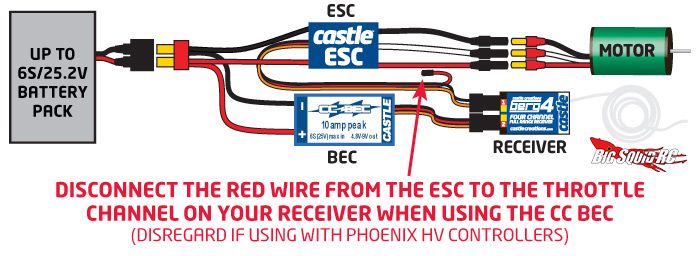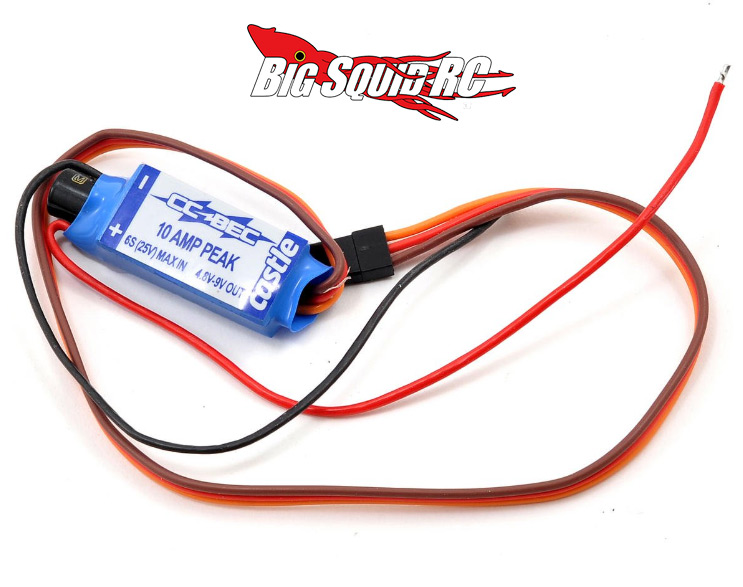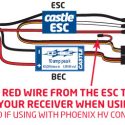Everybody’s Scalin’ – Explaining the BEC
A BEC is one of the most important upgrades you can make to your scaler, but it’s also one of the most confusing. While noobs are not surprisingly usually a bit in the dark on what one is, even long time hobbyists can sometimes be aloof.
Let’s start with the “what”. A BEC (Battery Eliminator Circuit) is a device that allows your servo to get the juice it needs from the receiver by way of a direct connection to the battery.
This allows for a powerful servo to operate at full capacity without causing your system (and by proxy, your vehicle) to go haywire. A juice hungry servo can cause all sorts of problems, from glitching to total shutdown.
I first learned about the necessity for BECs the hard way- I installed a high zoot Hitec into my OG Wraith 6 years ago and could not figure out why it kept randomly stopping and jerking. I thought my ESC was bad. Turns out that when placed under any kind of load (i.e. rock crawling) the servo was peaking the system and causing it to go to sleep.
I’ve found that in general it’s a good idea to install a BEC into your vehicle if you are replacing the stock servo with anything aftermarket that’s over 200 oz of torque, especially if you have a 2.2 rig and/or weighted wheels.
Installing a BEC (Castle Creations makes the most popular one) is pretty easy, assuming you don’t mind a little soldering.
The BEC has a receiver plug which needs to be installed into the AUX or BAT port on your ESC. The other end of it features two wires; a positive and negative. They should be soldered directly into the battery connecting wires on your ESC, red to red, black to black. This is how the BEC gets direct power.
Lastly, disconnect the small red wire from your esc at its receiver plug. This makes it so the ESC does not give power to the receiver. Note, DO NOT FORGET THIS STEP! If you leave it connected, very bad things can happen.
You now have it properly installed, but if you are springing for a BEC you may as well get the Castle Link tool as well so you can program it to allow for more voltage if your servo needs it.
Here is a picture of Castle’s wiring diagram. It does a great job explaining what goes where.

This is also a very nice, succinct video on the topic.
Hopefully now you “get” BECs and why they are so important!



